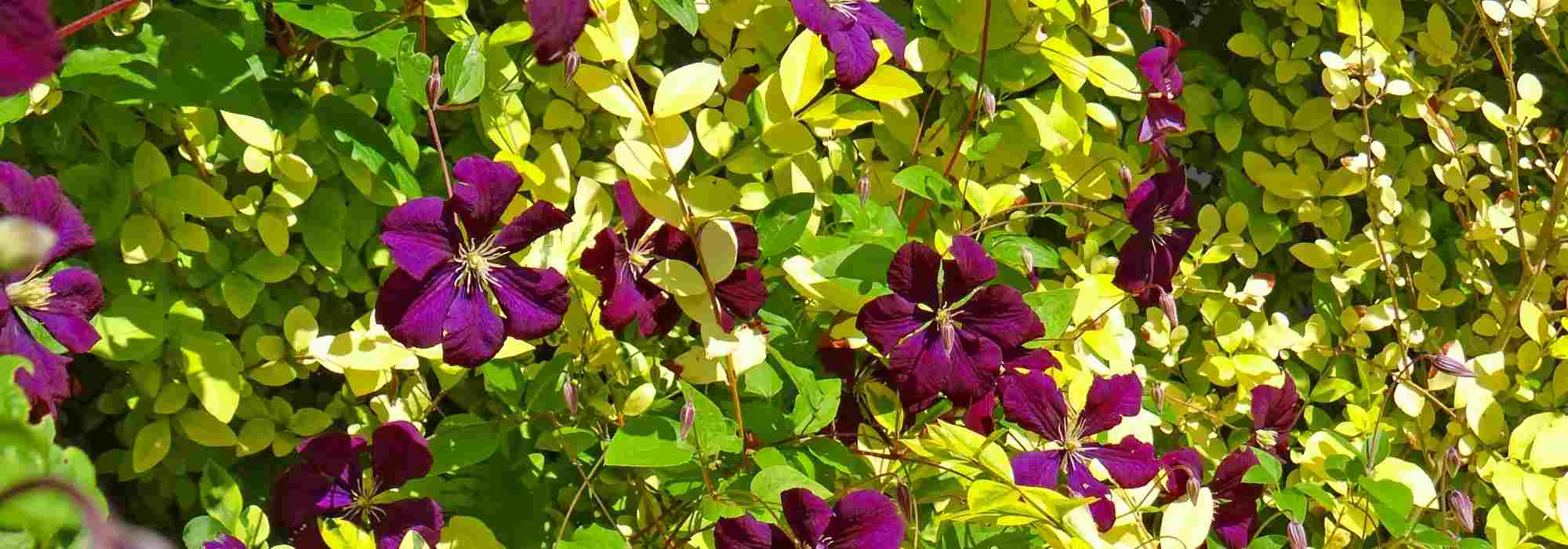
8 climbing plants to grow on a tree
A selection of climbing plants to enhance a tree
Contents
Climbing plants running up tree trunks are utterly enchanting, and adorn these wooded supports with their graceful, often very vigorous lianas. The tree, whether very much alive, bare at its base or dead, thus provides a vertical support through its trunk, and a horizontal one through its branches. You can therefore use one to brighten winter months of a deciduous tree with an evergreen climber, and conversely enliven a leafy tree that is less attractive in summer with summer flowering displays. Climbing plants have quite different attachment systems — tendrils, climbing roots, suction cups — which you should consider when choosing one to plant, as well as the root system, which should be as non-invasive as possible. Their relatively controlled spread is also a crucial factor, both in width and height, to be adapted to the tree’s size.
One immediately thinks of climbing roses or some annuals, extremely voluble. There are many others! Here are a few ideas to glean to make your trees ornamental subjects in more ways than one.
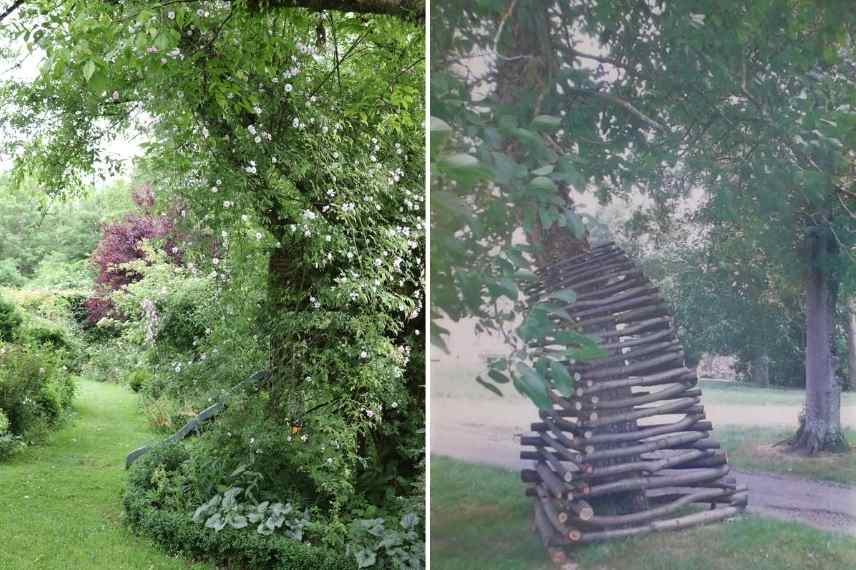
A climbing rose scaling large garden trees, and an original wooden structure enabling any climbing plant to clamber over it
Rosa filipes 'Kiftsgate' liana rose: a conqueror of giant trees
Roses do not strictly speaking have an attachment system like other climbing plants in this selection. They nevertheless possess such charm when they wind around tree trunks that I simply had to mention at least one! You will need to help climbing roses a little by placing metal hoops around the trunk to guide them, their rather flexible thorny shoots doing the rest once they reach the branches.
Le liana rose filipes ‘Kiftsgate’ possesses all qualities required to establish itself permanently at the base of a tree with a high crown or on a magnificent tree with a broad trunk: its dimensions — 8 m high and 4.5 m wide — give it an extraordinary reach to conquer the branches; the whiteness of its charming flowers with a wild-rose aspect brings a true brightness beneath the foliage, and its summer flowering has the charm of botanical roses. It is also scented: you can enjoy the tree’s shade and the exquisite fragrance of its roses all summer long!
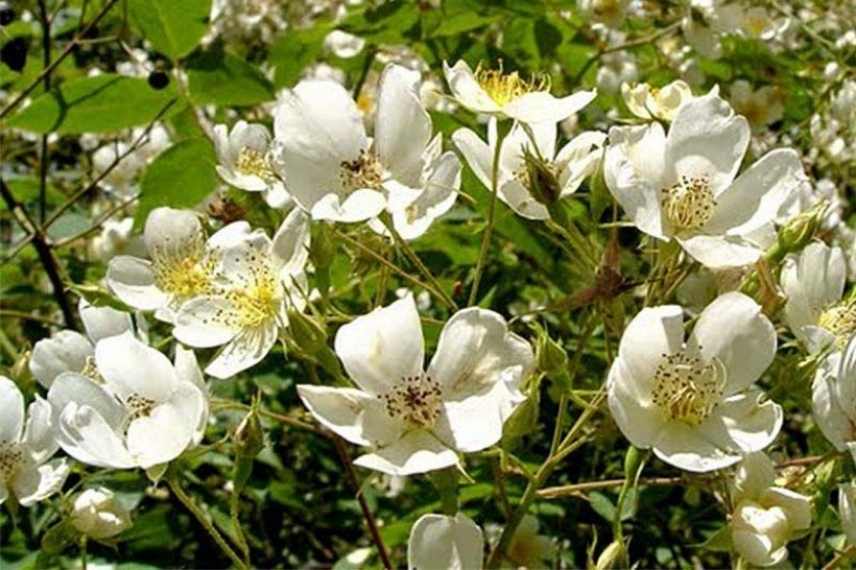
Lonicera similis var. delavayi: romantic and luminous
Here is a particularly interesting honeysuckle in this selection: decorative year-round thanks to its evergreen foliage, Lonicera similis var delavayi has very fragrant yellow flowering over a long period, from June to July, sometimes as late as September. Hardy and tolerating both sun and partial shade, it can be installed beneath dense or more open foliage, thereby increasing choice of tree used as support. The yellow tubular flowers will also bring a lot of light beneath a denser evergreen tree.
Clinging easily thanks to its voluble stems, honeysuckle needs a little help at first. On the trunk, you can train it in its early stages by installing an iron trellis.
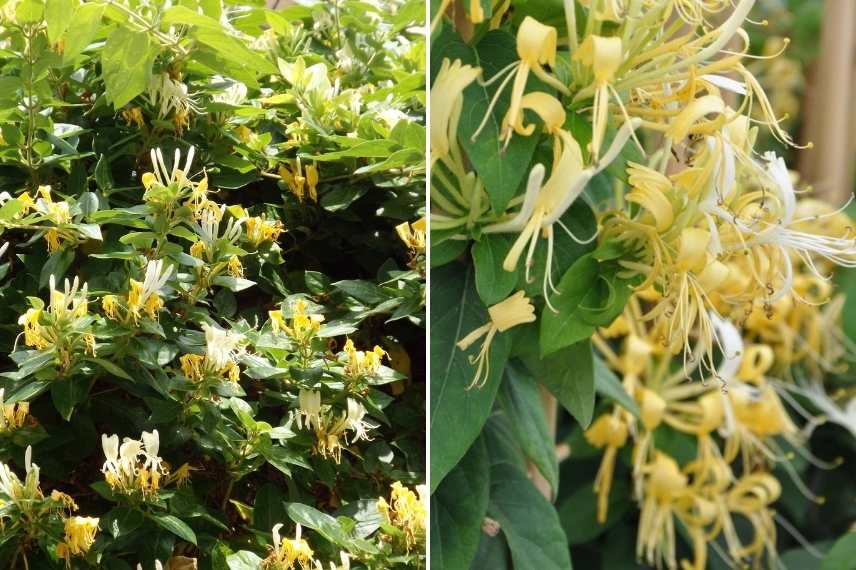
Discover other Climbers
View all →Available in 0 sizes
Available in 0 sizes
Available in 0 sizes
Available in 0 sizes
Available in 0 sizes
Available in 1 sizes
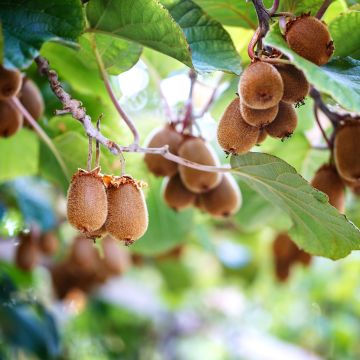
Available in 2 sizes
Available in 1 sizes
Available in 1 sizes
Cobaea 'Blue Bells': voluble annual
Many annual climbing lianas get on very well when planted at the foot of a tree : they only live during the growing season, but what a display from these stars that are not afraid to bravely scale vertical supports.
La Cobaea or Cobeae scandens, native to Mexico, is one of my top three annual plants: its long flowering, from July to October, in the form of bells first green, then white and finally violet is impressive (flowers measure between 7 and 8 cm). With very rapid growth, it will quickly cover a trunk with foliage. Sow in spring, at a rate of 2 young plants per tree. Needing plenty of sun and heat to smother itself in flowers, it is best placed under trees with a more or less fastigiate habit, which cast less shade. It requires fresh but well-drained soil. Cobaea clings with its tendrils, which should be lightly trained to a support at first. A rough bark will be sufficient for it to establish gradually.
Other annuals to consider sowing: morning glory, sweet pea.
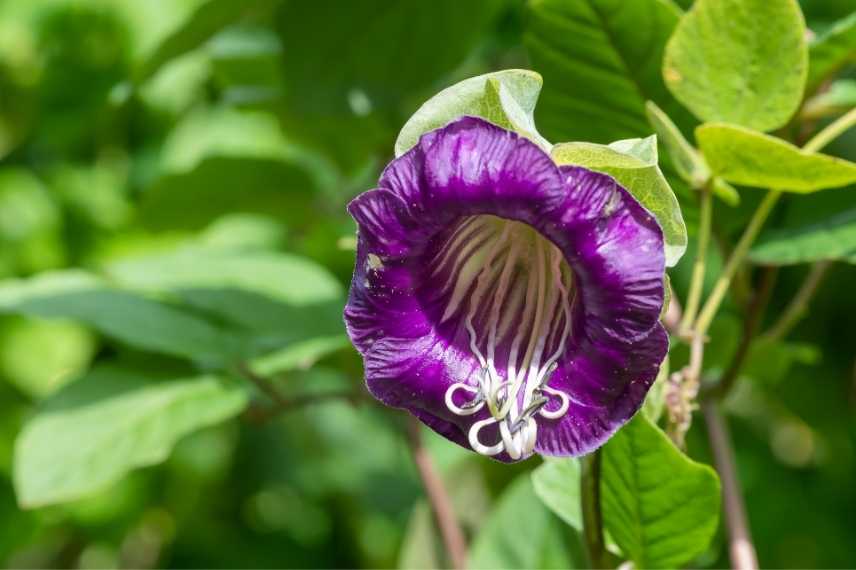
Read also
What to plant under a tree?Clematis tangutica 'Tibetan Mix': vigorous on all types of trees
Clematis are first-rate lianas that wind their stems, or more precisely their petiole formed into a small tendril, around a support.
clematis tangutica ‘Tibetan Mix’ is a very handsome variety of climbing clematis reaching nearly 4 m in height, and spreading about 1 m wide, perfect for establishing on a tree trunk and unfurling its charms horizontally along branches. With its pale yellow bell-shaped flowers with purplish anthers, this horticultural variety is truly ravishing and romantic. Its deciduous foliage is a lovely pale green. This beautiful climbing plant is planted in mild-climate regions as it remains sensitive to frost. The well-known saying for clematis, “roots in shade, head in sun”, would it be reversed in this situation? Install it beneath trees with light foliage, plant a small bush at its base to give shade, or position the base on the shaded side of the trunk.
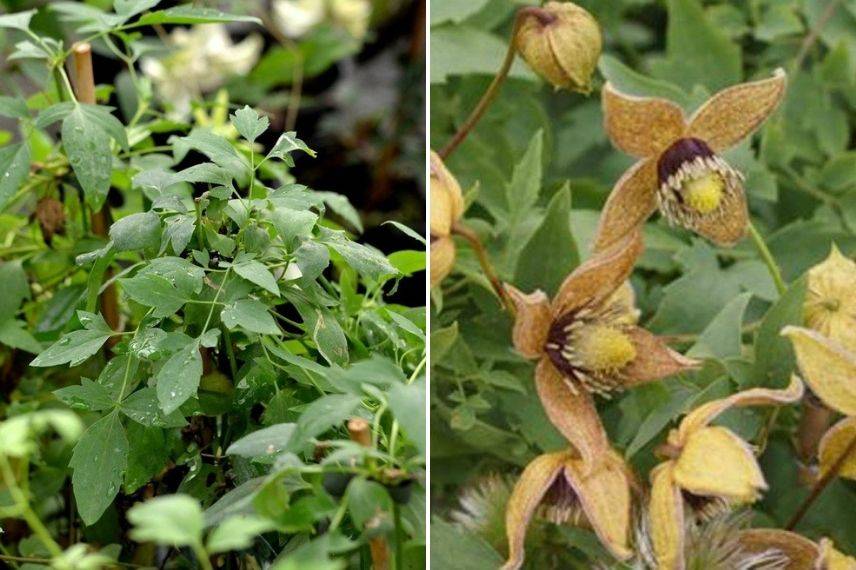
Wisteria venusta 'Rosea': sheer charm for a stately tree
You may have admired during walks in large gardens or parks wisterias proudly dripping with flowers under a tree’s arches in spring. It’s a sight of rare beauty! Wisterias are, however, extremely vigorous and require a suitably robust support and constant vigilance for the slightest deformation of that support.
By choosing a Wisteria venusta, much less “strangling” than Chinese and Japanese wisterias, you can achieve a magical result at the foot of a tree without endangering its life. Wisteria venusta ‘Rosea’ is a superb wisteria, with tender pink flowers, a somewhat less common colour that brings a great deal of gentleness and romance to the garden. Clusters of flowers are pendulous, about 20 cm long, and can run boldly, enlivening the long shoots of a deciduous tree.
As with many other examples in this selection, the wisteria will need help at the start to be wound around the trunk, then it will cope perfectly on its own thanks to its wonderfully voluble stems!

Hydrangea seemanii: to adorn a tree in the shade
An evergreen climbing hydrangea is an excellent choice for growing a plant on a deciduous tree, in a shaded spot, or on a dead trunk used as a totem.
Hydrangea seemanii is a very attractive climbing bush capable of cloaking a trunk and, for example, bringing greenery to a bare tree. More suitable for this use than Hydrangea petiolaris, and with a more erect habit, it offers handsome bright green foliage that remains in place all year round. Fully hardy, it can be planted almost anywhere, provided it has cool, moist to damp soil. Its flowering is superb, cream-tinged and lightly scented. With slow growth for the first two years, it will then grow rapidly.
The adventitious roots of climbing Hydrangeas act like climbing roots, attaching themselves very independently to the tree trunk without any other assistance (just as ivy would, which uses the same method of attachment).

Akebia quinata: elegant Asian with a voluble character
Akebia quinata, or five-leaf akebia, is a wonderful climbing plant, still relatively little used as an ornamental liana. Yet it is very interesting because of the lightness of its pale green foliage with five charming leaflets, semi-evergreen in mild climates, and its astonishing spring flowering often bicoloured pink-lilac and purple. While it requires training on a support, it can be established on a structure surrounding a tree, in a range of exposures: it will then unfurl its long lianas, climbing rapidly up to 8 m in height and 2 m in width. Don’t worry, once established it will require little maintenance, and especially no pruning which it dislikes. A single plant will easily cover 8 to 10 m², which shows how vigorous it is! If you add that it is completely hardy, you’ll understand that this Asian beauty should not be forgotten in your future tree-dressing projects.
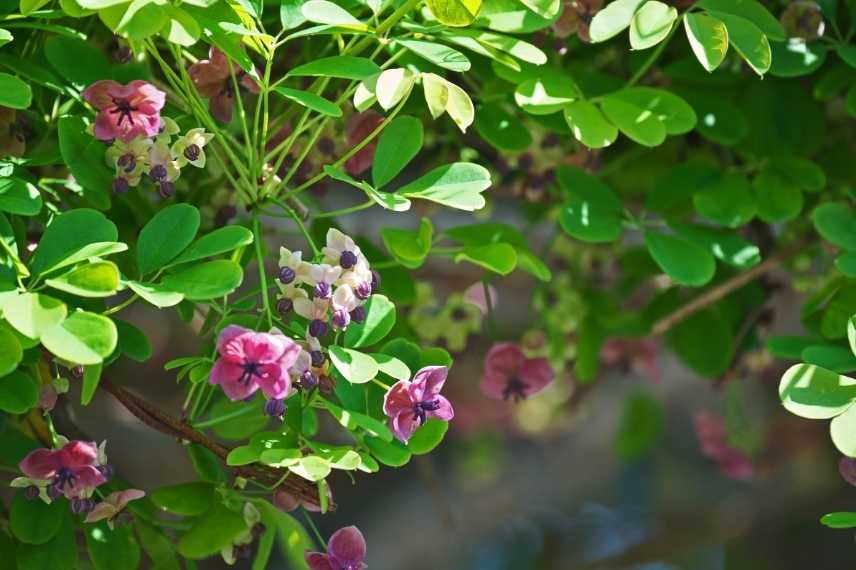
Partenocissus : superb autumn colours on large trees
A Virginia creeper climbing into a tree — you wouldn’t think of it! Think again… provided you have a large structural tree in your garden capable of hosting this giant climbing plant, what at first seems a fanciful idea becomes a magical sight, especially in autumn, when it dons warm colours, turning a blazing red. Virginia creepers or Partenocissus attach themselves by their leaves, which act as small suction cups. They therefore easily cling to the rough support provided by a tree .
Partenocissus quiquefolia and its beautiful leaves with five dentate leaflets, and Partenocissus triscupidata with large trilobed leaves perform wonderfully when climbing a tree, producing a truly spectacular curtain at the heart of autumn (up to 8 m in every direction)! They have the advantage of tolerating any exposure.
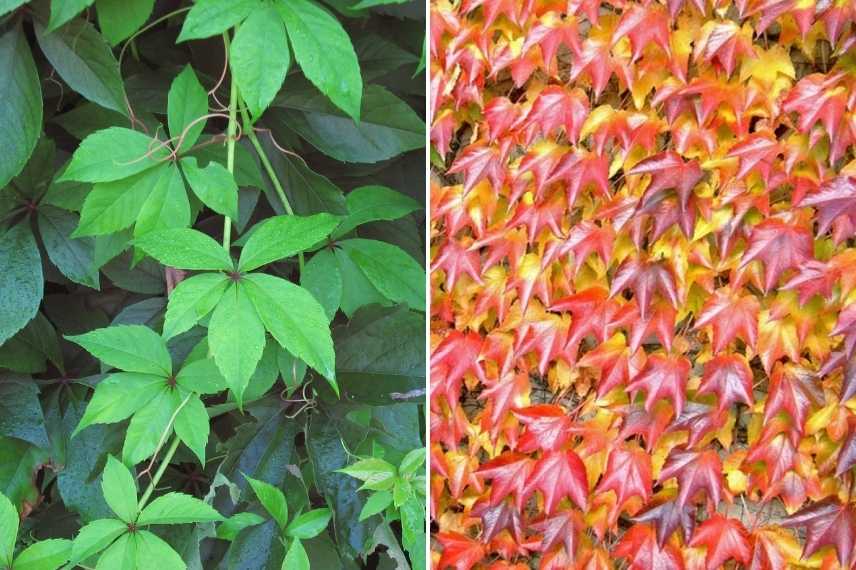
- Subscribe!
- Contents
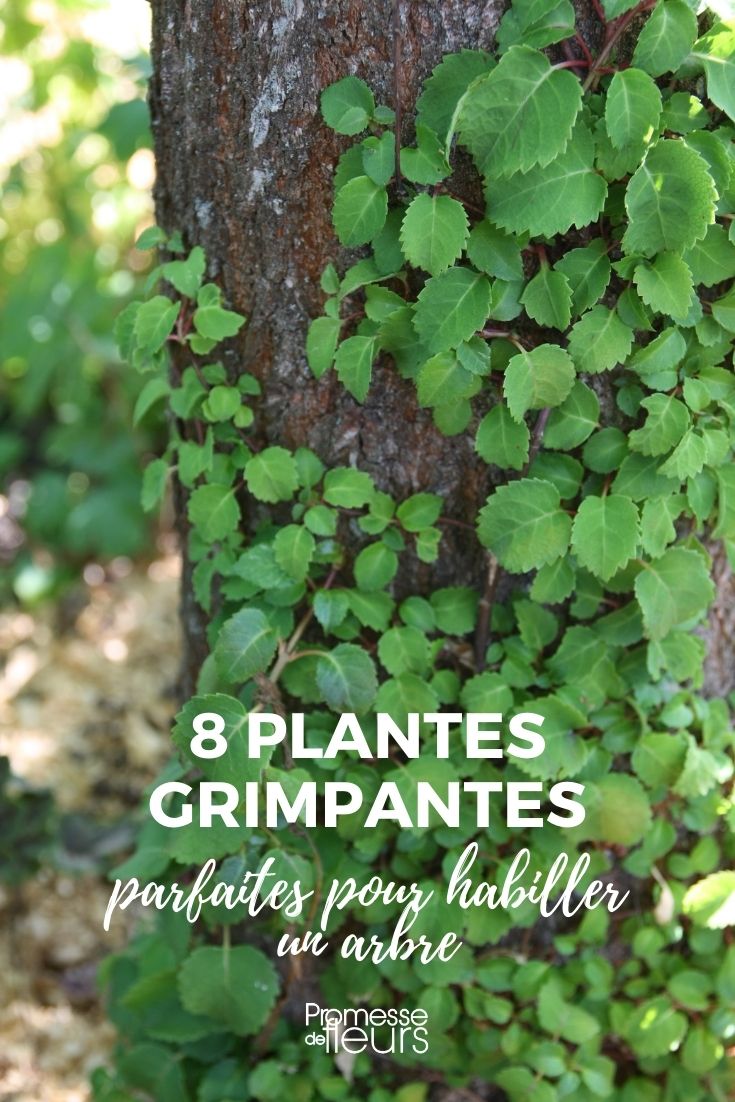































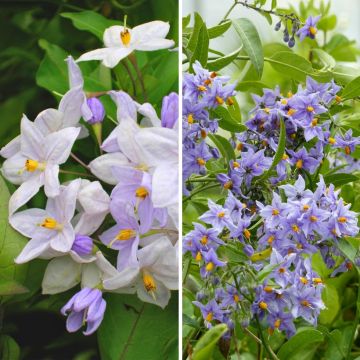
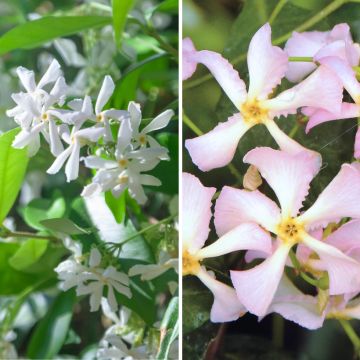

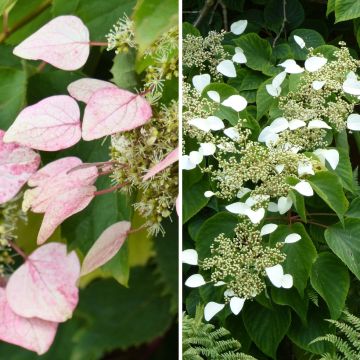
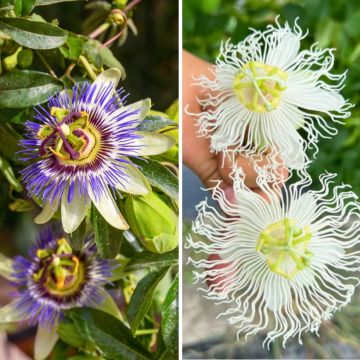

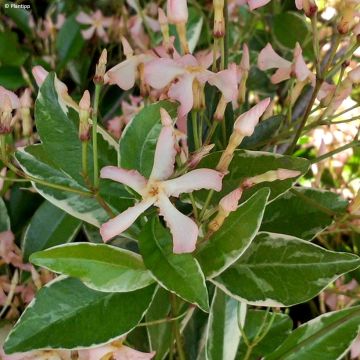

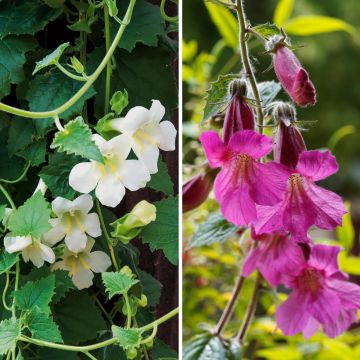
Comments